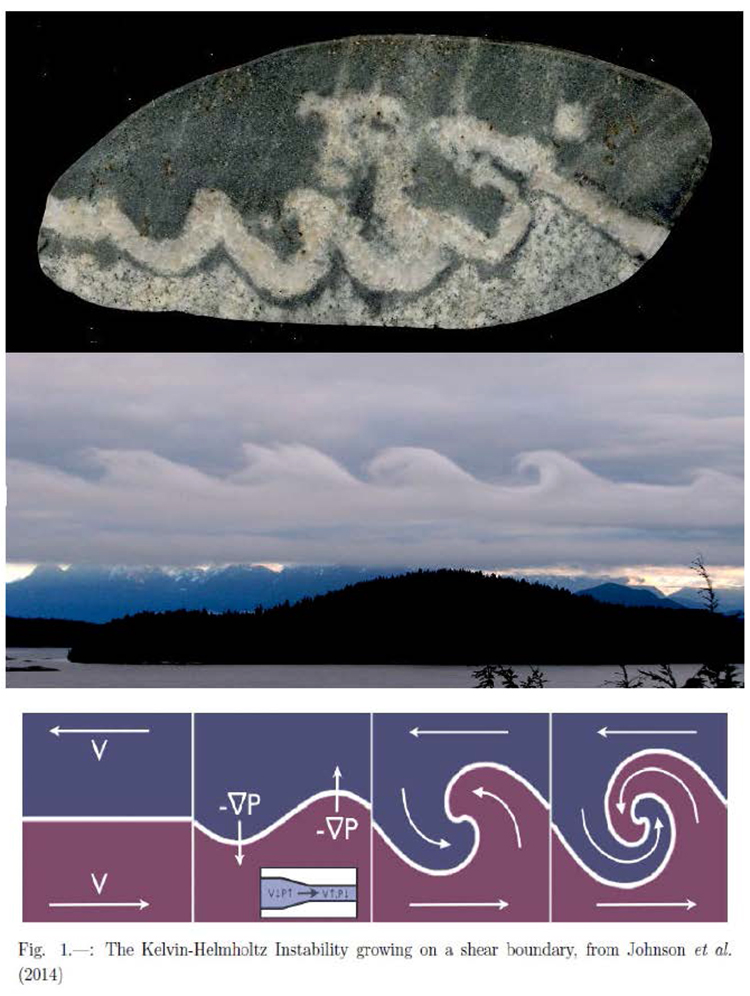Reader Christian Gronau returns with another “guest Friday fold” submission.
Christian writes,
Greetings from a cold and wet west coast. A good time to root through old rock samples – and let the imagination run free …
The little compilation below strikes me as visually compelling (both photographs are mine) – but how likely is it that the suggested analogy has any merit ?
Would it have some entertainment value to post this triptych under your rubric of “Friday Fold”? I certainly would like to hear (your) expert opinion on the question raised.
The cut and polished cobble from a local BC beach is 10cm wide and consists of two common local rock types : typical Cordilleran granodiorite (bottom) and dark grey andesite. The latter forms extensive dyke complexes, cutting through the granodiorite in a number of styles, with hard linear to soft undulating contacts, including faulted and fragmented sections. The local dykes range from centimetres to many meters in width.

Certainly the visual match is spot-on! A neat example, and I would not be too surprised if a similar variation in rheology under the traction of simple shear induced these structures. What do other readers think?
Thanks for pitching in with the Friday fold, Christian!

Geometric similarity does not mean there is similar dynamics between the phenomena. The magmatic system has a much high viscosity than the one of the atmospheric system. Atmospheric system is typically of turbulent in nature having a high Reynolds number while the magma (or sub-solidus rock) flows in a laminar fashion having a very low Reynolds number. The two contrasting Reynolds numbers suggests that the physics between the two systems is completely different. Similarly, the formation of schlieren in granite cannot be explained as a dynamic counterpart of the cross bedding in sandstone despite sometimes they indeed look alike. Glazner, 2014 Geology (doi:10.1130/G36078.1) has related discussion on this issue.
Similar and interesting info is in the video by “Sixty Symbols” called “What causes stripey clouds?”.
Turns out to be the ” Brunt–Väisälä frequency”, and is nicely-explained there.
It may not have anything to do with the formation of rock-patterns…
It’s interesting that the stripes in the andesite are at right angles to the boundary with the granodiorite. Any ideas why?